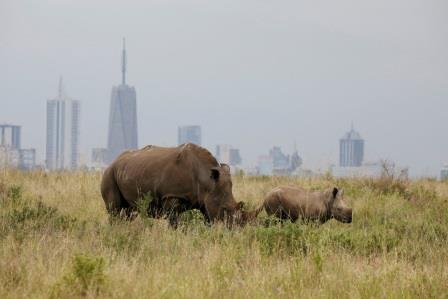NAIROBI (KENYA) – At Nairobi National Park, rhinos, lions, buffalo and leopards roam around with the city’s skyline as the background. It is Africa’s only game reserve to be located in a capital city.
The city grew around the park, which has been fenced in on three sides.
The unfenced southern boundary features the shores of the Mochiriri River which is a favourite haunt of breeding lions. The Kenya Wildlife Authority has come out with a 10-year plan to fence the southern boundary of the park to bring down animal-human conflict.
However, conservation activists are up in arms and a court is scheduled to hear the case on Wednesday.
“This is the lifeline of this park,” said Reinhard Nyandire, a conservationist working with the Friends of Nairobi National Park pointing to the pastureland around.
“When they fence the park, you cut them (the animals) off,” he said.
The group helps KWS keep the land around the park open.
According to the KWS report, buildings encroach on the park’s land and two years ago, a six-km railway bridge was constructed through it. Raw sewage is also emptied into the river.
During the rains, animals often leave the park as the grass is too high to spot predators and they return during dry season when the grass inside is more green. The park also features migration corridors that lead to other parks.
A 2016 KWS report said fencing was the “least suitable option” to reduce animal-human conflict. Shrinking ranges would spark fights between rhinos and lions. Some species cannot migrate and inbreeding would be another issue.
The plan said installation of free motion-sensor lights to disperse lions have reduced animal-human conflict.
Nkamunu Patita, co-ordinator for the Naretunoi conservancy which borders the park, said many landowners do not want any fencing.
(Photos syndicated via Reuters)
This story has been edited by BH staff and is published from a syndicated field
